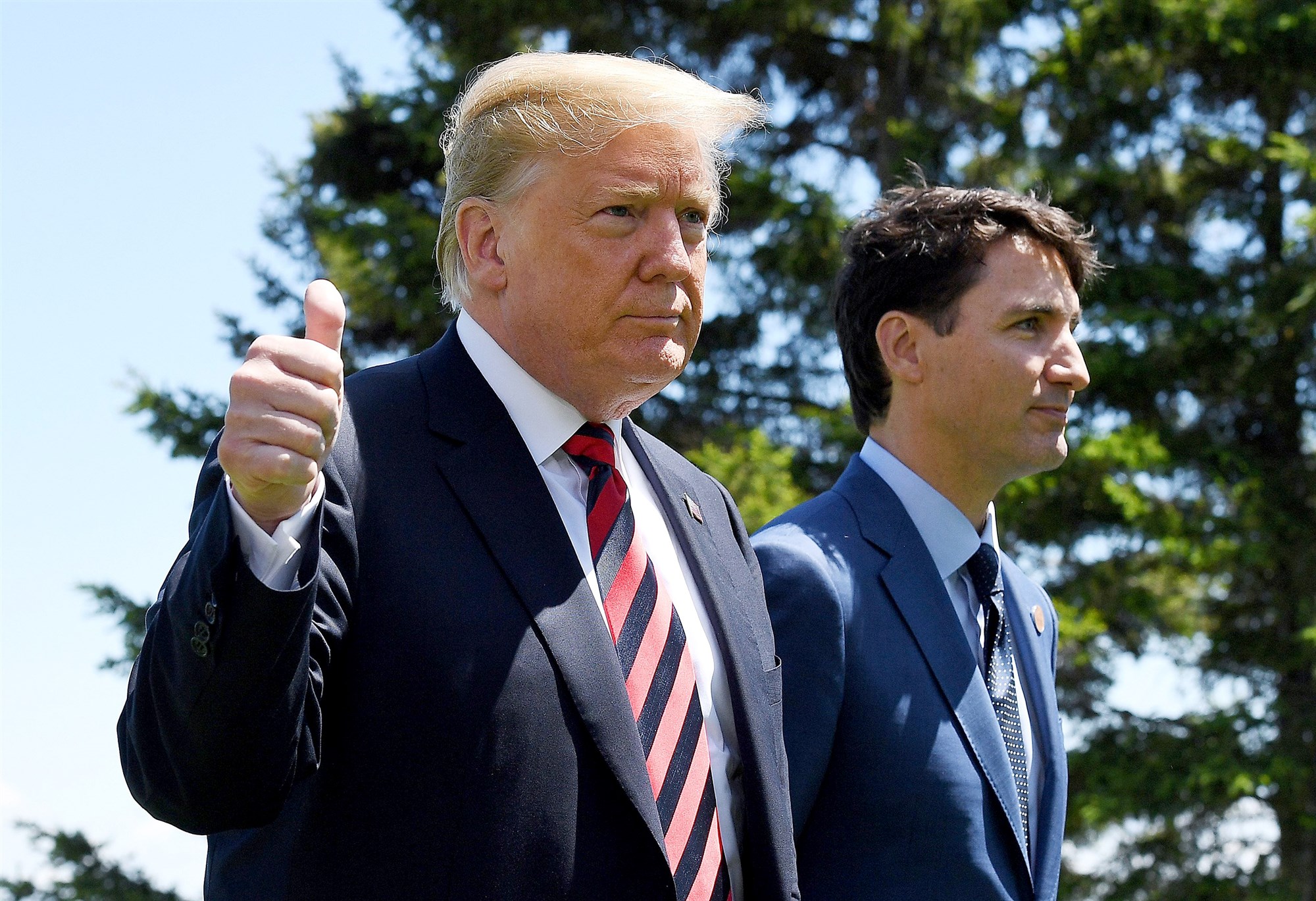 The Presidential thumb is up, but to what exactly? Leon Neal / Getty Images
The Presidential thumb is up, but to what exactly? Leon Neal / Getty Images
President Trump’s recent letter to Canada’s Prime Minister urging him to meet this country’s stated commitment to move towards spending 2% of GDP on defence was predictably met by comments from a government spokesperson noting that Canada continues to be among the most reliable contributors of forces to NATO operations. We can expect similar exchanges at the upcoming meeting of NATO heads of government in Brussels.
The problem is that this line, which has been taken by successive governments, does not actually respond to the issue. It is a political bait-and-switch strategy that hopes to evade discussion of an embarrassing subject by shifting attention to a different one.
In this case both issues relate to NATO’s resource challenges, however they are two very different sides of the coin.
One is the willingness of member nations to commit adequate resources to operations, both in terms of the size and type of forces offered and in the “caveats” or strings nations attach on how the Alliance can use them. This is a serious issue and Canada can rightly point to the fact that it has one of the better records among NATO members in making meaningful troop contributions and placing few if any limitations on their use. The problem is short-term in nature and varies considerably with the national and international politics surrounding a given mission. Each case is different, and Canadian governments are no less capable than anyone else of constraining the Alliance’s use of its forces even if they have typically not done so.
The 2% of GDP debate, on the other hand, is about an entirely different issue: that of member nations equitably sharing responsibility for building and maintaining the Alliance’s overall military capacity. In other words, it is about creating and sustaining Alliance capabilities for the long-term as opposed to short-term political questions about how it responds to specific missions at particular times.
Building and maintaining defence capabilities requires sustained investment over years if not decades. Consequently, the extent to which member nations make (or fail to make) the necessary ongoing resource commitments directly impacts the long-term capacity of NATO to respond effectively to security threats. Member states formally acknowledged this fact – as well as the need for new investment and for the burden to be more fairly shared – at the 2014 Wales Summit when all members committed to work towards spending 2% of GDP on defence within ten years. Canada’s new defence policy and current budget plans do not meet this commitment.
It is in this context that Canada’s response to criticism of its defence spending must be seen. American frustration with Canada and certain other NATO allies long predates the Trump administration and is deeply rooted not only in the executive branch but also in the Congress. The US is also not alone, as virtually all those Alliance members who are meeting or actively working towards meeting the commitment continue in their own ways to press the laggards to also step up.
The Canadian Government obviously sees itself being on the wrong side of this discussion (which it indeed is) because it refuses to engage in a direct conversation about the issue. Instead, it continues to play bait-and-switch, trying to divert attention towards the entirely different subject of the politics around the commitment of forces to NATO operations. This is an intellectually dishonest response to valid criticism, and one that is unbecoming of a founding member of the Alliance or a nation that prides itself as being a champion of effective rules-based international collaboration in the management of global peace and security challenges.
Charles Davies is a CDA Institute Research Fellow and frequent contributor.